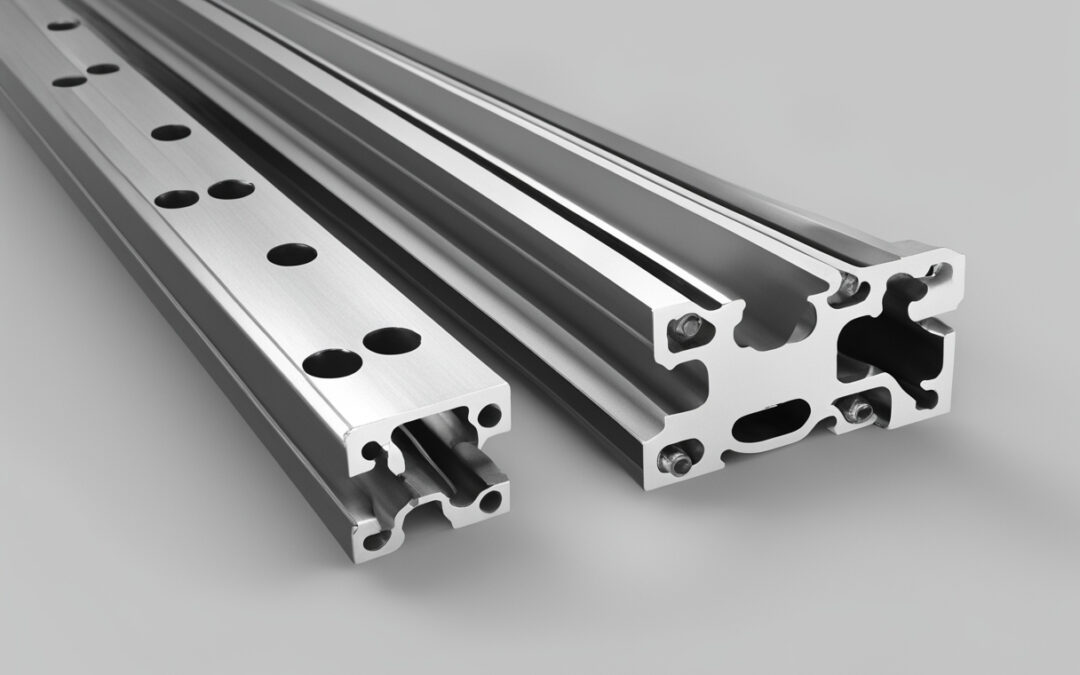Linear rail extrusions and linear rail guides are crucial for precision engineering and automation. These components are essential for achieving accurate and smooth linear motion in various industrial and technological applications. This article delves into the intricacies of linear rail extrusions and linear rail guides, highlighting their importance, types, applications, and benefits.

Linear guide rail extrusions for precision linear motion
What Are Linear Rail Extrusions?
Linear rail extrusions are mechanical components designed to support and guide linear motion. They consist of a long, rigid rail, typically made from aluminum or steel, which provides a straight path for a moving component known as a carriage or block. The rail is usually created through an extrusion process, where metal is heated and forced through a die to form a specific shape.
What Are Linear Rail Guides?
Linear rail guides, also known as linear guideways or linear motion guides, are systems that combine linear rail extrusions with carriages equipped with ball bearings or rollers. These guides facilitate the smooth, precise movement of the carriage along the rail, minimizing friction and wear. The carriage can support and move loads with high accuracy and repeatability, making linear rail guides indispensable in many high-precision applications.

Linear rail guides and linear rail extrusions
Types of Linear Rail Extrusions and Guides
- Profiled Rail Guides:
- Rectangular Rails: These rails have a rectangular cross-section, offering high rigidity and load-bearing capacity. They are ideal for heavy-duty applications.
- Square Rails: Similar to rectangular rails, but with a square cross-section, providing good load distribution and precision.
- Round Rail Guides:
- Round Shaft Guides: Featuring a cylindrical shape, these rails are easier to install and less expensive, though they may not offer the same precision as profiled rails.
- Miniature Linear Guides:
- Designed for small-scale applications, these guides are used in devices where space is limited, such as compact medical devices and small-scale automation systems.
- Dovetail Slides:
- These guides use a dovetail-shaped groove for the carriage to slide in, providing high rigidity and precise positioning.
Manufacturing Process
The manufacturing process for linear rail extrusions involves several key steps:
- Extrusion: Metal, typically aluminum or steel, is heated until malleable and then forced through a die to form the basic rail shape.
- Precision Machining: The extruded rails undergo machining to achieve exact dimensions and a smooth surface finish.
- Heat Treatment: Rails are heat-treated to enhance hardness and strength.
- Grinding and Polishing: Rails are ground and polished to ensure smoothness and straightness.
- Protective Coating: A protective coating is often applied to prevent corrosion and wear.
Applications of Linear Rail Extrusions and Guides
Linear rail extrusions and guides are used across various industries due to their versatility and precision. Common applications include:
- CNC Machines:
- Linear guides provide the necessary precision and rigidity for accurate movement of cutting tools and workpieces.
- 3D Printers:
- They ensure smooth and precise movement of the print head, leading to high-quality prints.
- Robotics:
- Linear guides are used in robotic arms and automated systems to enable precise and repeatable movements.
- Medical Equipment:
- They are used in diagnostic devices and surgical robots where precision and reliability are crucial.
- Automotive Industry:
- Linear guides are employed in various stages of car manufacturing, including assembly lines and quality control systems.
Benefits of Linear Rail Extrusions and Guides
- High Precision:
- Linear guides offer exceptional accuracy, essential for applications requiring precise movements.
- Load Capacity:
- They can support significant loads, making them suitable for heavy-duty applications.
- Durability:
- Made from robust materials, linear guides are designed to withstand harsh operating conditions and long-term use.
- Smooth Movement:
- The use of ball bearings or rollers in the carriage ensures minimal friction, resulting in smooth and consistent movement.
- Versatility:
- Available in various sizes and configurations, linear guides can be tailored to fit a wide range of applications.
Rail Extrusions and Guides for Linear Motion
Linear rail extrusions and linear rail guides are integral to the functionality of many modern machines and devices. Their ability to provide precise, reliable, and smooth linear motion makes them indispensable in industries ranging from manufacturing to healthcare. Understanding the types, manufacturing processes, applications, and benefits of these components can help in selecting the right system for specific needs, ensuring optimal performance and efficiency.






















